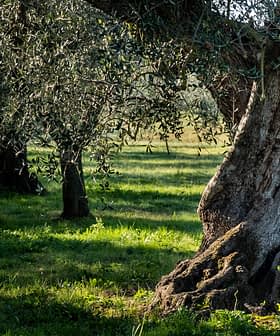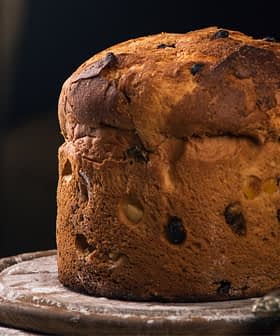The Flavors of Extra Virgin Olive Oil
Countless factors influence the flavors in extra virgin olive oils. Understanding the basics can lead to satisfying results.
 Fernando Martinez Roman (NYIOOC)
Fernando Martinez Roman (NYIOOC)  14.1K reads
14.1K readsExtra virgin olive oil is not only the healthiest edible oil but also a way to discover a wide range of flavors. The flavor of extra virgin olive oil is influenced by factors such as geography, olive varieties, and processing techniques. Professional tasters evaluate the quality of extra virgin olive oil based on characteristics like bitterness and pungency, and consumers can learn to appreciate and experiment with different flavors in their cooking.
extra virgin olive oil is much more than just the healthiest edible oil. It is also a vehicle to discover thousands of different flavors.
It is produced in dozens of countries at different elevations and climates from hundreds of olive varieties, each providing a specific and unique flavor profile.
See Also:Olive Oil BasicsAlong with geography, dozens of other variables impact the flavor expression of an extra virgin olive oil; climate, proximity to other plants, farming techniques, processing technologies and storage facilities all affect flavor.
Furthermore, professionals can blend the oils of different varieties, or cultivars, to create a potentially infinite number of aromas and tastes.
Understanding extra virgin olive oil flavors
While anyone can learn to taste and appreciate extra virgin olive oils and all the potential flavors, they are also evaluated by professional tasters, usually organized in panels.
Their work is traditionally coordinated by a panel leader who summarizes the results of the tastings and ultimately confirms the category of the olive oil in question and whether or not it deserves to be called extra virgin.
See Also:Cooking With Extra Virgin Olive OilProducers use panels to decide which monovarietals (oils made from a single olive variety) to combine into blends. Tasting panels are also formed to evaluate the quality of EVOOs submitted for competitions.
Two of the most relevant characteristics of high-quality extra virgin olive oil are the presence and intensity of bitterness and pungency, which indicate the presence of phenolic compounds.
“Our first mission is to record the identity card of the extra virgin olive oil, confirm it is free of defects, evaluate the presence of fruity notes, which we can also describe as being green or ripe, or for their intensity, and evaluate the presence of bitterness and spiciness,” Simona Cognoli, a professional olive oil taster and founder of Oleonauta, told Olive Oil Times.
See Also:Olive Brine, a Secret Kitchen Ingredient“Tasting extra virgin olive oil is at least as relevant than the physical-chemical analysis of the product,” she added. “When I bring them to my courses, consumers start by tasting some bitter extra virgin olive oil, which most of them find unpleasant.”
“Then I bring them on a guided tour of different extra virgin olive oil flavors,” Cognoli continued. “As the last step, they go back to that bitter EVOO, which might be bitter indeed but is also well harmonized with its specific notes, and they do not even find it bitter anymore, as they have come to perceive the full range of its aroma and its taste.”
“That is how many of them discover that bitterness is part of the extra virgin olive oil character and end up loving it,” Cognoli said.
Aroma and taste
All consumers can follow the steps of olive oil tasters and chefs to learn how to taste and compare extra virgin olive oils, discover their scents and experiment with their use as a raw dressing or cooking ingredient.
“They do not only give value to a specific recipe; the aroma and taste also deliver new emotions to a dish,” Cognoli said.
See Also:Use Extra Virgin Olive Oil for Healthy and Delicious BakingDepending on their characteristics, professional chefs and amateur cooks alike can add flavors to their dishes ranging from aromatic herbs to tropical fruits and much more.
“There is an entire world of scents and tastes to explore,” Cognoli said.
These notes can contribute to flavor depending on the particular extra virgin olive oil and how it is included in the dish. In addition, aromas will be affected by the temperature of the dish when the oil is employed.

Shrimp with Sun-Dried Tomatoes, Garlic, Olive Oil
Such a variety of possible outcomes means that chefs and amateurs should rely on more than one extra virgin olive oil in the kitchen.
“If we consider extra virgin olive oil as a recipe ingredient, then we cannot use the same extra virgin olive oil for all our dishes,” Cognoli said. “That is something that not all chefs have explored yet, maybe because many have yet to discover the outstanding variety of EVOOs we have at our disposition.”
There’s more to taste than flavor
Given the growing bank of knowledge surrounding the health benefits of polyphenols, many producers now focus on crafting EVOOs with the highest possible quantity of these organic compounds.
Still, those high levels do not necessarily translate into high-quality products.
“Many focus on the early harvest to strengthen the presence of polyphenols,” Cognoli said. “But producers have to be careful as the early olive is not only more difficult to remove from the tree, it also can lead to an unbalanced product.”
See Also:Tips for Selecting High-Polyphenol Olive OilsSome early harvest EVOOs can lose their aromas more quickly, which are an essential part of the pleasure and the quality of tasting, while EVOOs produced with riper fruits will still maintain an adequate volume of polyphenols for some time.

Lina Smith (NYIOOC)
“It is true that extra virgin olive oil provides relevant health benefits, but it is not a pharmaceutical, per se, which means that its healthy profile should accompany the pleasure of consuming it,” Cognoli said. “It is not a food integrator or a pill to consume daily.”
Still, high-quality extra virgin olive oil production is undergoing major changes over time, as new techniques and procedures are applied in the field and the following transformation phase.
See Also:Extra Virgin Olive Oil Shelf Life“Thanks to a growing knowledge base and the development of new technologies, we are now more capable of producing extra virgin olive oils which perform from both a sensorial and healthy point of view,” Cognoli said.
On top of that, many high-quality EVOOs come from regions where culture and history are integral to the products.
“There is a whole world of scents and taste that can be explored, but there is also a world of beautiful stories to know about producers and their lands,” Cognoli said.
Share this article









